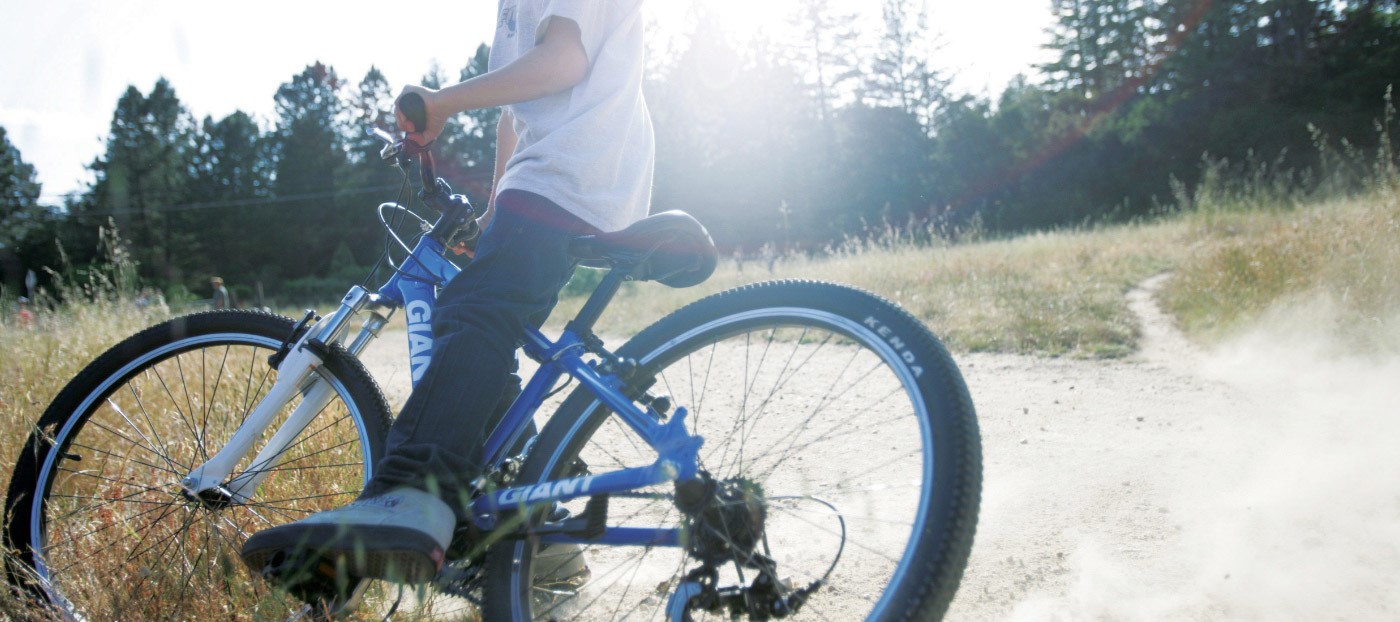Learning to ride a bike for the first time as a child can be a truly magical experience. The freedom and speed of a bike is very exciting for children, bringing smiles and joy for many years. It can also be a tricky process, so it’s important to ensure you choose the right size bike for your child early on.
The information below is an overview of the choice in children’s bikes as the child develops. Our bike sizing guide has more detailed sizing tables for adult bikes. If you have further questions, please call us on 01792 346503, or chat to us using our Live Help service for expert assistance.
| Rider Age | Rider Height (ft/in) | Rider Height (cm) | Suggested wheel size (inches) |
| 2 – 4 | 3’0″ – 3’4″ | 91 – 102 | 12″ |
| 4 – 5 | 3’4″ – 3’7″ | 102 – 109 | 14″ |
| 5 – 7 | 3’6″ – 3’10” | 107 – 117 | 16″ |
| 6 – 8 | 3’9″ – 3’11” | 114 – 119 | 18″ |
| 7 – 10 | 3’8″ – 4’5″ | 112 – 135 | 20″ |
| 9 – 13 | 4’4″ – 5’0″ | 132 – 152 | 24″ |
| 13+ | 4’10″+ | 147+ | 26″ |
Children’s bike sizes
As soon as children can walk, they will enjoy moving about on a Balance Bike (with small wheels and no pedals), a or on a 12 inch or 14 inch wheel pedal bike with stabilisers. Pedal bikes with stabilisers are great for teaching kids how to pedal and steer, whereas balance bikes help develop essential balancing skills early on and have become popular in recent years for helping early development.
For getting to school or for family outings on the bike, children are more easily carried in a child seat (up to about age 3) or trailer or tag-a-long (up to age 4/5) until they are able to safely ride a two-wheel bike.
Age 2 – 3
From ages 2 and up, children are strong enough to learn to ride a two-wheel bicycle. It is important they have both the confidence and motivation, so some children may be a lot older before they are ready to begin. Parents, friends and schools can play a big part in creating an interest and readiness to learn to ride a bike. Here are useful tips on how to teach children to ride a bicycle or you can visit Sustrans for information about cycling to school projects.
At around this age, 12″ wheel bikes are the ideal size and they are available in a range of styles. Younger children may find hand brakes harder to master than back-pedal breaks until their hands are strong enough. Typically, by the time they reach the age of 4-5 children will have the strength to use brake levers if they didn’t already.
Age 4 – 5
By the age of 4 years old, most children will be ready to ride a larger, 14″ wheel bike, most of which are available with removable stabilisers if the child has yet to learn to balance without them. Similarly, many 16″ wheel bikes (suitable for 5-7 year olds) are also available with removable stabilisers, with some models even being fitted with gears.
Age 6 – 10
The 18″ wheel and 20″ wheel cycles are for age ranges 6–10, with many models being fitted with gears in addition to premium models being fitted with more powerful V-brakes and suspension forks. If you know what type of riding your child would like to go for, you can choose the bike to suit. If they want to go off road cycling as well as on roads and paved trails then mountain bikes are suitable, while BMX-style bikes are great for off-road riding and doing tricks.
Age 9+ Junior Bikes
24″ wheel junior bikes are suitable for ages 9 and up and have most of the same features as an adult bike, like front & rear gears, V-brakes or disc brakes and even full suspension mountain bikes. Once your child progresses on to a 26″ wheel bike, sizing is typically determined by frame size based on the rider’s height – see our adult bike sizing guide for more information.
Other things to look out for when buying a child’s bicycle
- We strongly recommend against buying a bike for your child to grow into. It can be dangerous for a child to ride a bike which is too large for them and can be a painful and unpleasant riding experience.
- Price differences in kids bikes are often due to the quality of the materials and components used to manufacture it. Cheaper bikes typically use steel tubing for the frame, which is heavier and more difficult to handle than lightweight aluminium.
- All bikes sold in the UK must be built to British Safety standards, and therefore will conform to their safety specifications.
- It is important to have bikes serviced to ensure chains and wires remain tight and moving parts are correctly lubricated. Depending on usage, we recommend a basic service every 6 months. You can take your bike to a local bike shop to have this done.
- We always recommend wearing a cycling helmet when on a bike. We have a wide range of children’s helmets in fun colours available for children to choose from.
